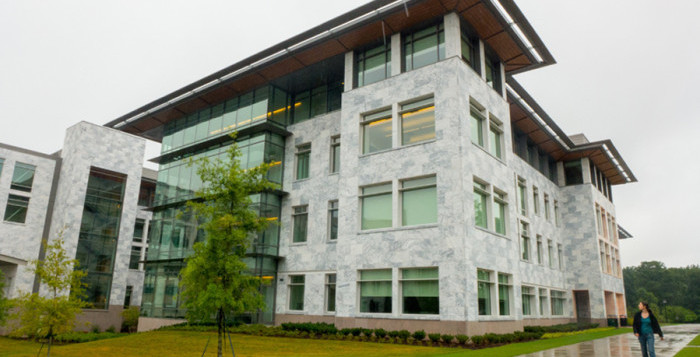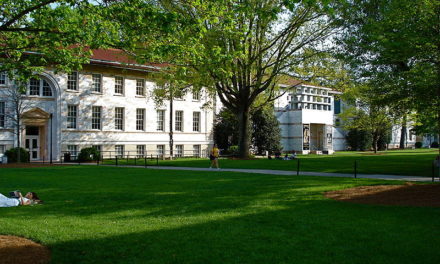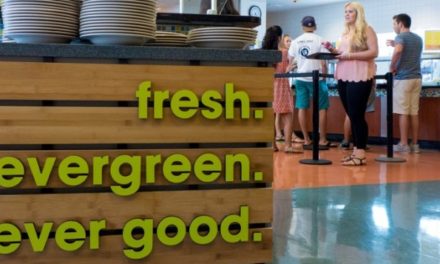Researchers moved into the new Health Sciences Research Building on Haygood Drive this summer after two years of construction.
The new building is 200,000 square feet with four stories above ground and one below, according to a June 21 University press release. Construction began in June 2011 following demolition of the Turman west residence hall and was completed in April 2013, when it also received a certificate of occupancy, according to the press release.
In a joint email to the Wheel, David Stephens, the vice president for research in the Woodruff Health Sciences Center, and Charlie Andrews, the senior associate vice president for space planning and construction in the Woodruff Health Sciences Center, wrote that the building features “a unique open-lab concept with natural light in labs and corridors and with write-up benches placed outside the laboratory space.”
The new building is also encased in five shades of marble that were numbered and placed in an exact location like a giant jigsaw puzzle, Stephens and Andrews wrote.
It includes biosafety level 2 and 3 labs (or labs that can isolate dangerous materials), a 160-seat auditorium and a café dining area offering breakfast, lunch and dinner with an outdoor seating option, Stephens and Andrews wrote.
The building will be LEED silver certified with features such as sensors that turn down the heating system when the building is not occupied, Stephens and Andrews wrote.
They added that each floor also has built-in composting and recycling containers. During the demolition of the Turman residence hall and construction of the new building, 18,548 tons of waste were recycled, which accounted for 98 percent of all construction waste.
A two-story bridge across Haygood Drive connects the building to the Emory Children’s Center, which includes pediatric clinical care and research, Stephens and Andrews explained.
The need for additional research facilities spurred the construction of the new building, Stephens and Andrews wrote. Research in the Woodruff Health Sciences Center has expanded in the past decade, with center-sponsored research funding growing from $202.2 million in 2002 to $481.7 million in 2012. At the same time, Emory’s research partnership with Children’s Healthcare of Atlanta also grew; the two institutions joined forces and fundraised for the new building, and the $90 million cost of the building was financed completely through philanthropy.
In addition to several pediatric research areas, research in the new building will also focus on drug discovery, immunology and vaccines, neurosciences, cancer, gastroenterology, transplant immunology, nephrology, biomedical engineering and human genetics, Stephens and Andrews wrote.
“The new research space is expected to result in discoveries that will improve quality of life and extend the lives of children and adults in Atlanta and beyond,” Stephens and Andrews wrote.
More than half of the new building is devoted to pediatric research through the Emory Children’s Pediatric Research Center, a partnership that also includes Georgia Institute of Technology and the Morehouse School of Medicine.
Notably, the faculty from the Wallace H. Coulter Department of Biomedical Engineering at Georgia Tech and Emory University have moved into the new building.
Stephens and Andrews added that the building will eventually hold 500 people, including 74 faculty researchers and their teams of post-doctorates, graduate students and staff. They added that while some current faculty and staff have moved into the new building, some of the laboratories are available for pediatrics faculty expected to be recruited during the next three years.
– By Mallika Manyapu
Photo by James Crissman
The Emory Wheel was founded in 1919 and is currently the only independent, student-run newspaper of Emory University. The Wheel publishes weekly on Wednesdays during the academic year, except during University holidays and scheduled publication intermissions.
The Wheel is financially and editorially independent from the University. All of its content is generated by the Wheel’s more than 100 student staff members and contributing writers, and its printing costs are covered by profits from self-generated advertising sales.






Hello mates, nice post and pleasant arguments commented at this place, I am really enjoying by these.